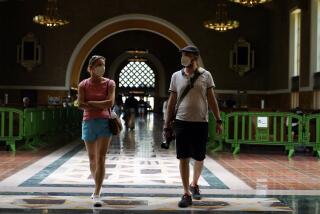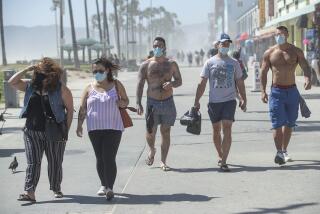‘Why are you wearing two masks?’ Shifting advice on COVID-19 protection brings changes, confusion
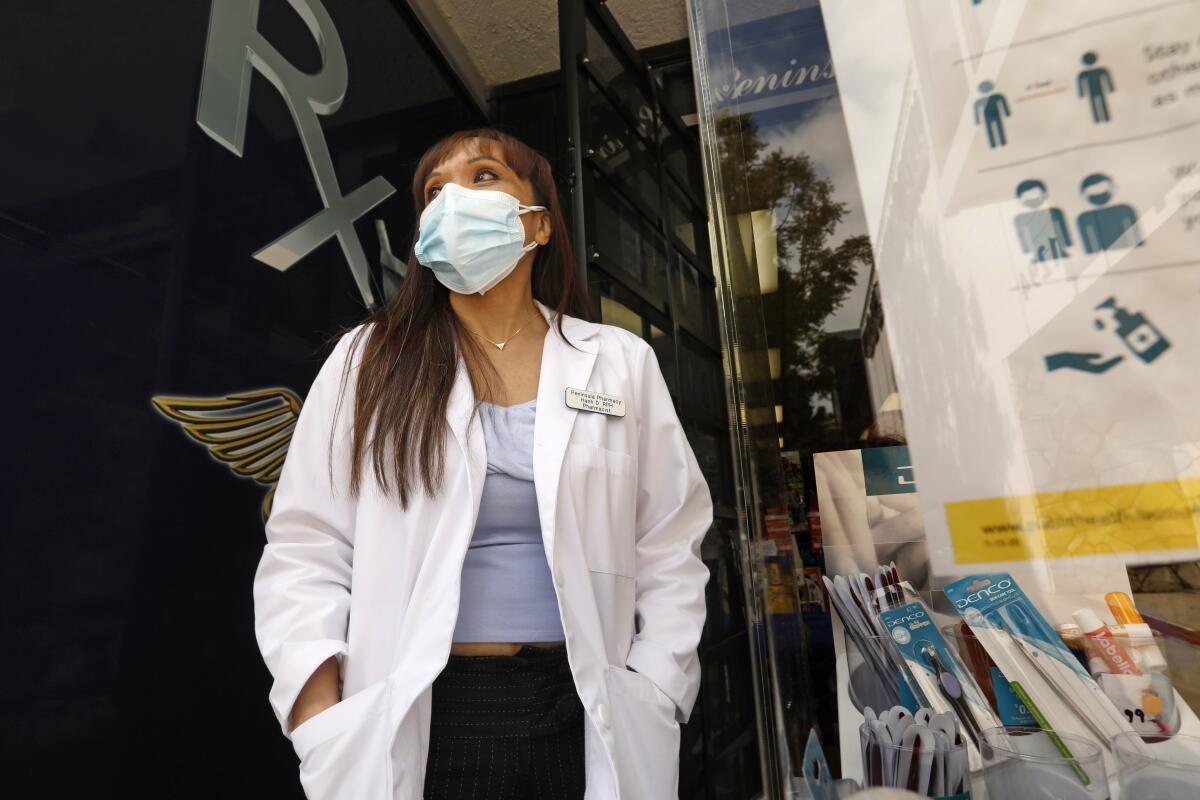
The question of the hour came from an unlikely source: a bright-eyed 6-year-old in a My Little Pony face covering.
“Why are you wearing two masks?” asked Kennedy Anne Coen, who was hunkered down Wednesday morning in her mom’s Torrance coffee shop, where a corner had been turned into a coronavirus-era classroom. “I’m only wearing one. My mom has one face shield and one mask.”
Why, indeed. That’s actually a better query for the U.S. Centers for Disease Control and Prevention. After weeks of tiptoeing around the issue, the agency announced Wednesday that two masks are better than one for protecting wearers from the coronavirus and its various frightening mutations.
Wearing a cloth mask over a surgical one can offer substantially better protection from potentially infectious aerosols, the CDC said in a new report. Adjusting a medical mask to fit more tightly can also provide similar protection, the report said. Recent lab tests conducted with dummies found that both the cloth-medical mask combination and the tighter-fitting medical mask decreased exposure by about 95%.
The federal revelation came as no surprise to Darlene Terrell, who was shopping Wednesday for a Valentine’s Day card and M&Ms, the first for her husband, the second for herself. Terrell works from her Los Angeles home counseling special needs adults via phone. On this day, she was double-masked as she pushed her shopping cart down the aisles of the busy Walmart at West 190th Street and Normandie Avenue.
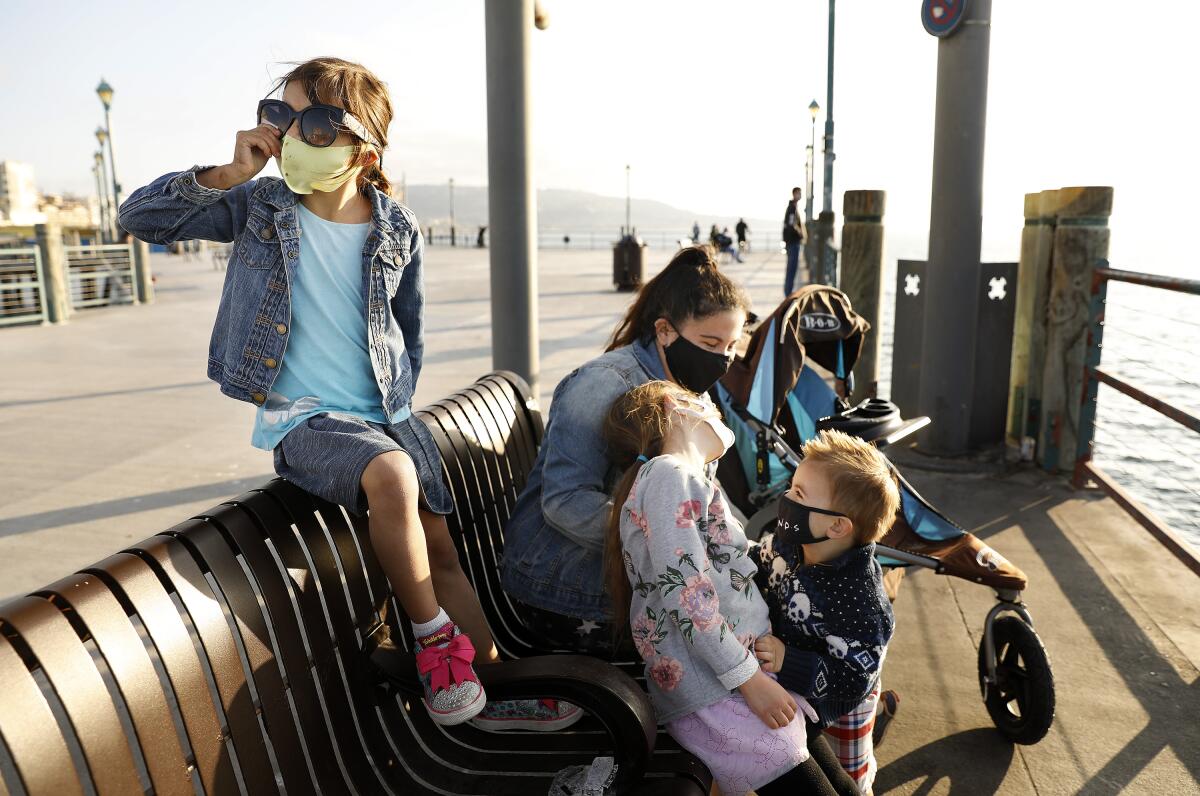
“This one doesn’t fit as secure as I want it to,” she said, pointing to her black cloth mask emblazoned with the slogan, “Get Covered Stay Covered.” “So I put on two. At one point in time, I had on three. I felt safer, especially when I went to certain places with a lot of people. It can be hard to breathe, but I’d rather be safe than sorry.”
Like many Southern Californians out and about on this sunny Wednesday, Terrell hadn’t heard about the new federal guidelines. But she’s all in favor of anything that causes people to mask up to thwart the seemingly endless pandemic. Naked faces, she said, make her very upset.
“I don’t think people are taking this as serious as they should,” Terrell said. “So many people have lost their lives, and [they] still don’t believe in the science. When you see people dying, a little light should come on in your head that says, ‘Rethink this.’”
A year has passed since the coronavirus claimed its first California casualty. The pandemic has killed more than 470,000 in the U.S., according to Johns Hopkins University, which estimates that more than 2.3 million people have died of COVID-19 worldwide. In California, the Los Angeles Times’ ongoing survey estimates that more than 45,000 people have died.
The coronavirus spreads most commonly in the air, when someone inhales infectious droplets or other tiny respiratory particles. Experts and officials have long noted that properly fitted masks and other face coverings can help prevent person-to-person transmission.
The new CDC report is not without caveats, though. Its takeaways are limited by the nature of the experiments, which “were conducted with one type of medical procedure mask and one type of cloth mask” and “did not include any other combinations of masks, such as cloth over cloth, medical procedure mask over medical procedure mask, or medical procedure mask over cloth.”
Still, the report is the latest indication that, in some cases, more masks may actually be better — a particularly important consideration as potentially more contagious coronavirus variants continue to gain a foothold across the country.
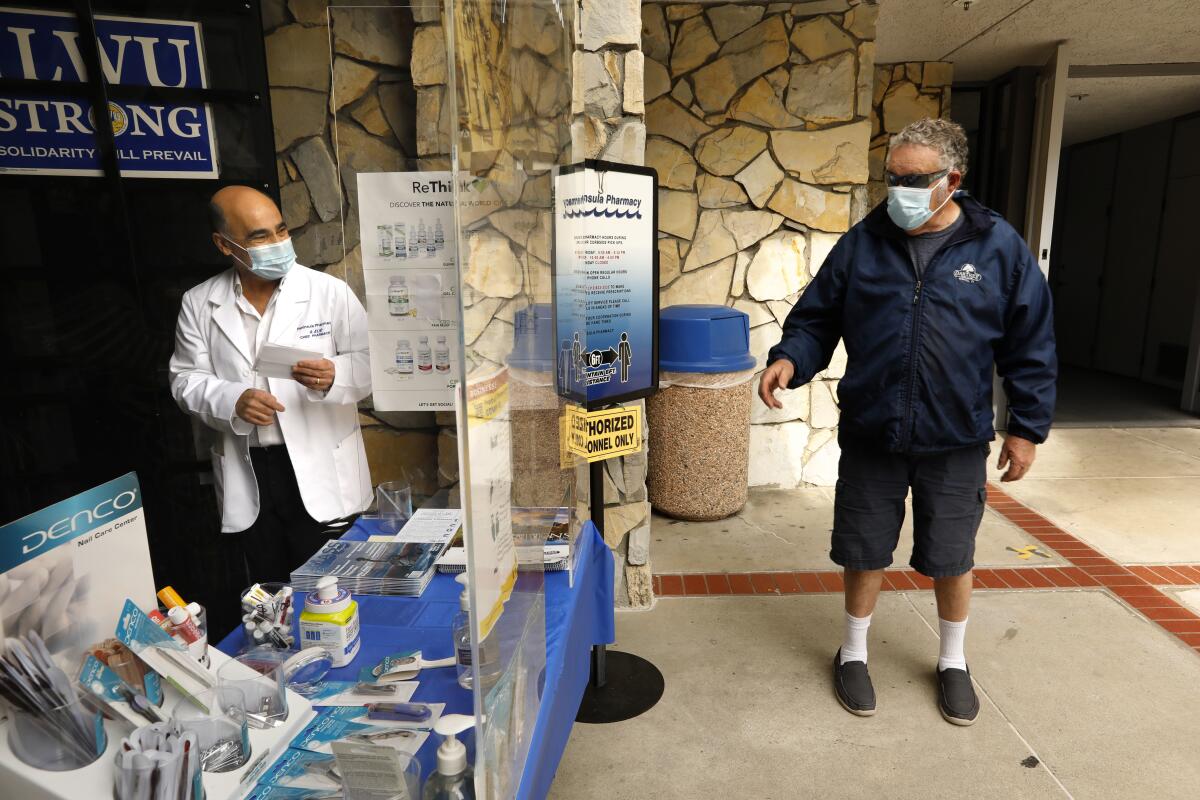
“Until vaccine-induced population immunity is achieved, universal masking is a highly effective means to slow the spread ... when combined with other protective measures, such as physical distancing, avoiding crowds and poorly ventilated indoor spaces and good hand hygiene,” the report states. “Innovative efforts to improve the fit of cloth and medical procedure masks to enhance their performance merit attention.”
Dr. Anthony Fauci, the U.S. government’s top infectious diseases expert, referenced the potential benefits of double masking during a television appearance a few weeks ago, saying: “If you have a physical covering with one layer, you put another layer on it, it just makes common sense that it likely would be more effective.”
During a recent media briefing, Los Angeles County Public Health Director Barbara Ferrer said donning an extra face covering was a “practical, sort of thoughtful” way to add “an additional layer between your respiratory droplets and the rest of the world.” She also observed that “you’ll see many more people now that are in fact double-masking.”
If the South Bay is any indication, Ferrer’s prediction will take some time to come true.
At the Peninsula Pharmacy in San Pedro, chief pharmacist Shahram Elie wore a double mask while waiting on customers. But 71-year-old George D’Ambrosi, who had stopped by to pick up a prescription, scoffed at the idea. He’s had his second shot of the coronavirus vaccine and believes that people need to be masked, but he doesn’t plan on donning more than one.
“Two masks,” he said, “aren’t going to do any better.”
At the Torrance post office, a maskless woman sprinted to the blue mailbox, trying to tug her turtleneck up over her face. A man strolling down Marcelina Avenue wore his surgical mask below his nose, rendering it useless.
Angel Gomez manned the outdoor host’s table at La Capilla, a Mexican restaurant in Old Town Torrance, on Wednesday, standing beneath a “Bienvenidos” sign in big block letters. His black surgical-style mask matched his somber shirt, pants and hoodie. Hearing about the double-mask recommendation for the first time, he waxed incredulous.
“Two?” he asked. “I feel like one’s enough. If you’re going to get sick with one mask, you’ll get sick with two. [Infected droplets] go in your eyes. You rub your face. If you feel safer with two, by all means. If one’s enough, that’s fine.”
Either way, he said, people need to protect themselves — and others.
“People without masks? At this point,” he said, “they’re not caring about anyone.”
Times photojournalist Carolyn Cole contributed to this report.
More to Read
Sign up for Essential California
The most important California stories and recommendations in your inbox every morning.
You may occasionally receive promotional content from the Los Angeles Times.

